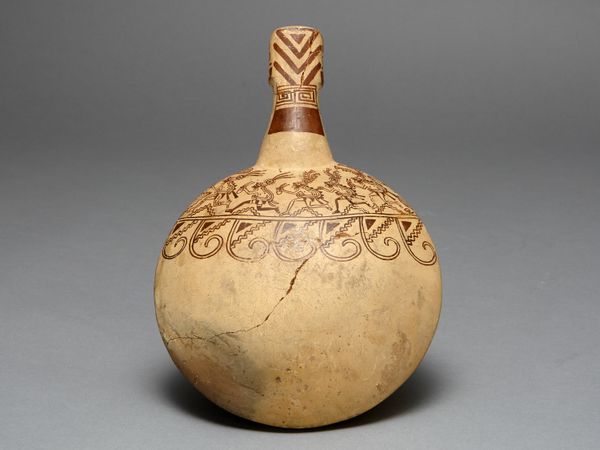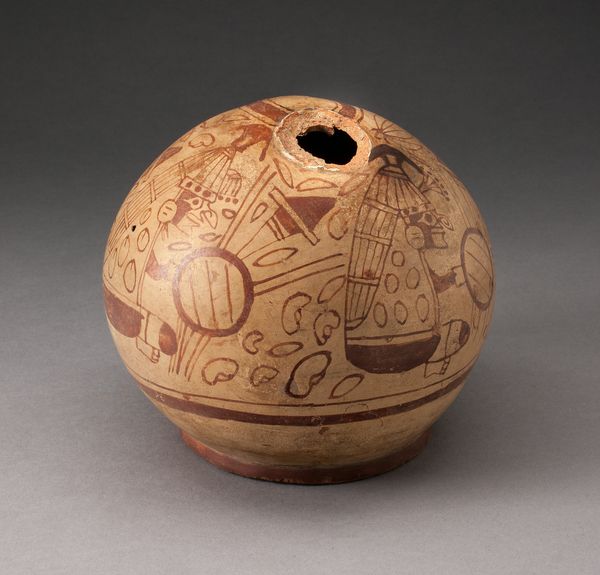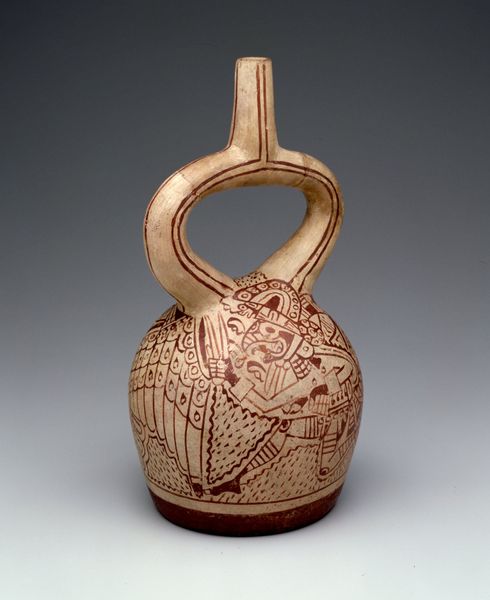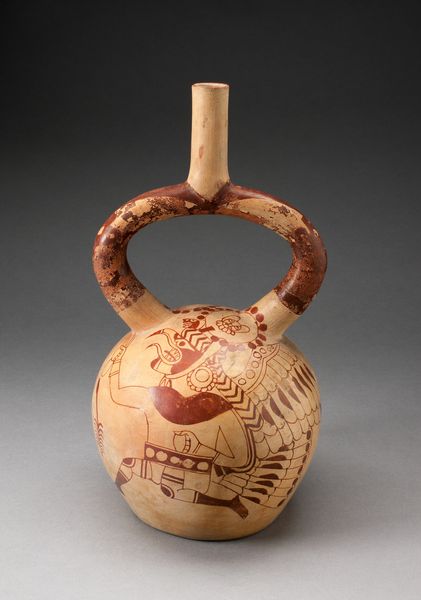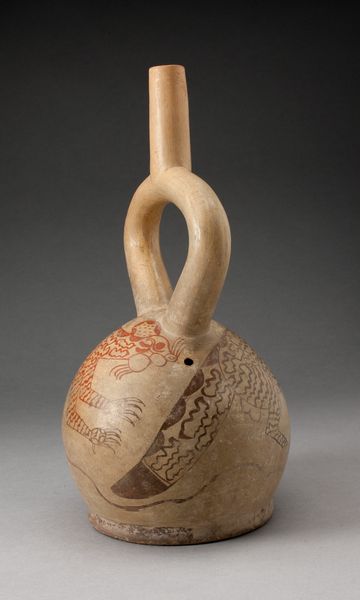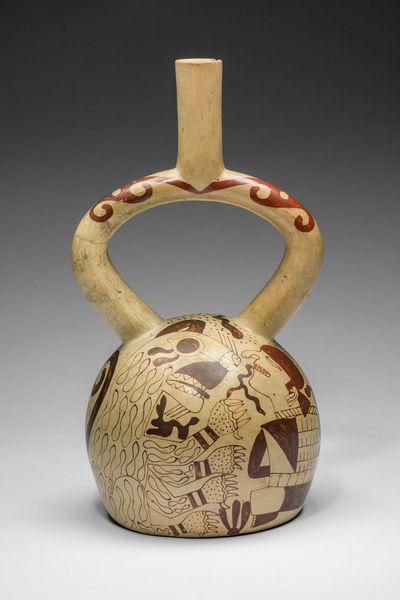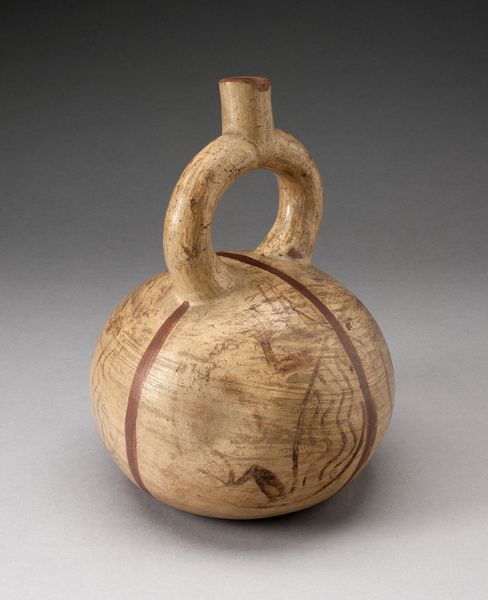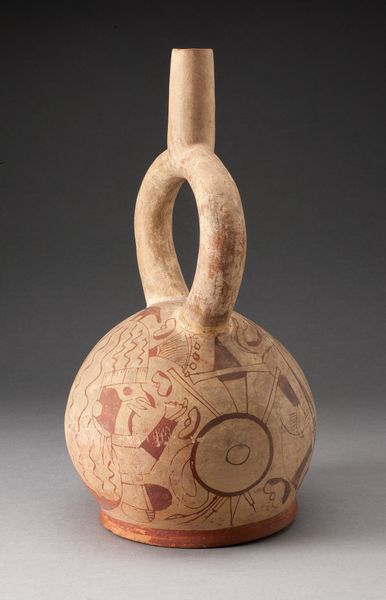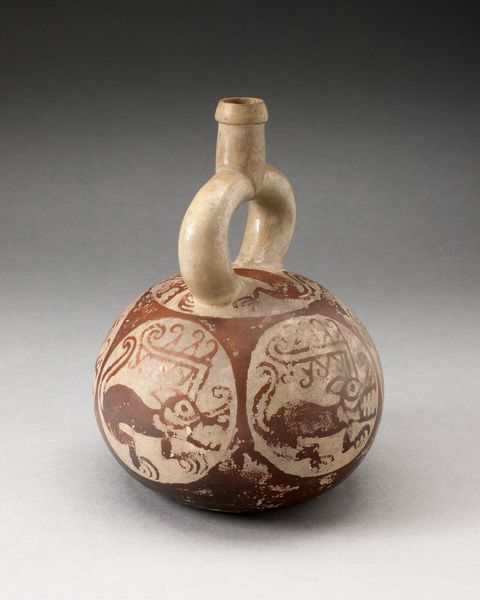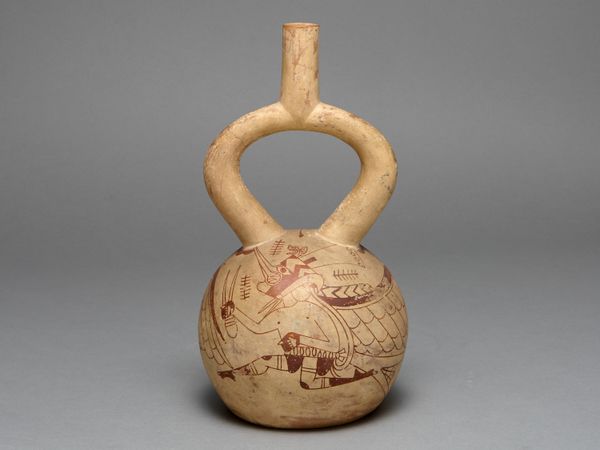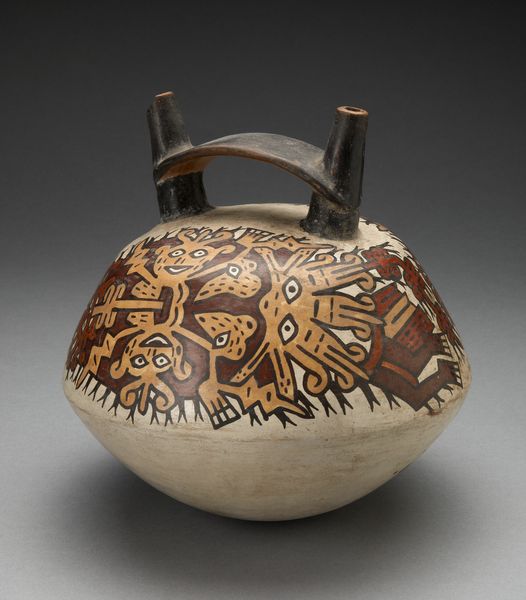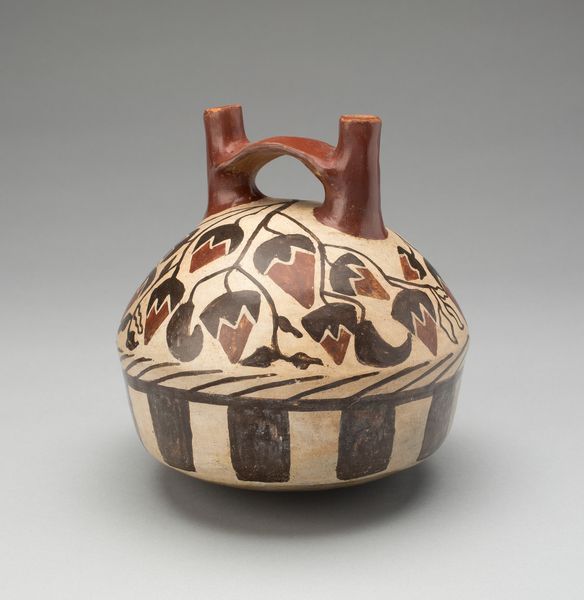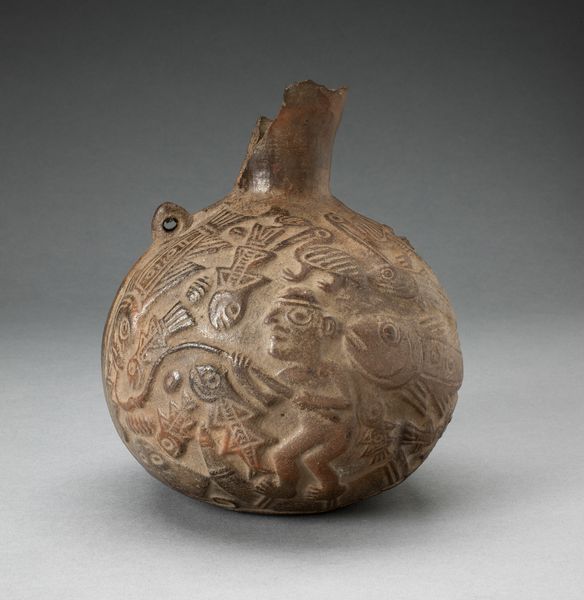
ceramic
#
narrative-art
#
ceramic
#
form
#
indigenous-americas
Dimensions: 29.9 × 18.7 cm (11 3/4 × 7 3/8 in.)
Copyright: Public Domain
Curator: This ceremonial vessel, currently held at The Art Institute of Chicago, was created by the Moche people circa 100 to 500. The ceramic depicts what seems to be a complex deer-hunting scene. Editor: The immediate impression is quite captivating. The linear dynamism creates a vibrant yet organized narrative on a bulbous form, all executed in earth tones. It gives off an earthy and energetic vibe. Curator: Indeed. It’s compelling to consider how such an object functioned within its society. The Moche civilization flourished in what is now Peru, and their art, including pottery like this, served as a vital form of communication and ritual. Editor: Look closely at the line work; the artist masterfully uses varying line thicknesses to suggest depth and dimension, enriching the two-dimensional surface. The rhythm and interplay between these lines lend themselves to the visual excitement I mentioned earlier. Curator: The scene, in addition to reflecting practical hunting practices, likely had deep symbolic meaning. Deer may have represented concepts of power, fertility, or the connection between the human and natural worlds in Moche cosmology. The depictions of war may have similarly served ritual purposes within their cultural framework. Editor: Observe how the form itself – a round body tapering to a smaller neck – is deliberately considered; the placement of figures accentuates the contours. This creates visual movement that enhances the hunting scene depicted. Curator: I agree. The very creation of this vessel—selecting the clay, shaping it, painting the scene, firing it—was likely steeped in social ritual. Such ceramics provide invaluable insights into the beliefs and activities of the Moche people, far exceeding anything obtainable by mere textual record. Editor: In the end, one cannot separate form from content here; each facet contributes to a coherent and powerfully evocative whole. Curator: Quite so; the object is a window onto the very culture of a civilization that would have otherwise passed unknown through history.
Comments
No comments
Be the first to comment and join the conversation on the ultimate creative platform.
